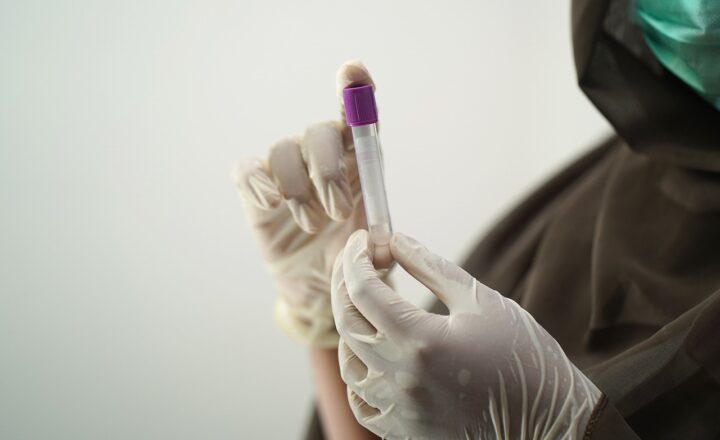Gold in Medicine: How This Metal Is Used in Treatments and Diagnoses
November 14, 2024

Gold has been revered for its beauty, rarity, and value for thousands of years. However, its applications extend far beyond jewelry and adornments. Intriguingly, gold also plays a vital role in modern medicine, proving to be an indispensable asset in various treatments and diagnostic procedures. From ancient practices to contemporary therapies, gold’s medical significance continues to develop, showcasing its versatility as both a treatment and diagnostic tool.
1. A Brief History of Gold in Medicine
Historically, gold has been used in medicine for millennia. Ancient Egyptians utilized gold in their embalming processes, believing it had the power to preserve the body for the afterlife. In traditional Chinese medicine, gold was often incorporated into potions to treat a variety of ailments, including respiratory disorders and skin conditions.
In the early 19th century, gold compounds began to gain attention in Western medicine. Notably, gold chloride was one of the first gold salts used for medical purposes, particularly in the treatment of rheumatoid arthritis. Toward the end of the 20th century, advancements in nanotechnology enabled the development of gold nanoparticles, opening new frontiers in medical applications.
2. The Role of Gold in Modern Treatments
Today, gold is utilized in various treatments, relying on both its chemical properties and its biocompatibility. The following are some of the most notable applications of gold in modern medicine:
- Rheumatoid Arthritis Treatment: Gold salts are commonly used to alleviate symptoms of rheumatoid arthritis, an autoimmune condition causing inflamed joints. Medications like auranofin, containing gold, reduce joint swelling and improve overall mobility. Although their use has declined in favor of newer therapies, gold still serves as an option for patients who do not respond to conventional treatments.
- Cancer Therapies: Gold nanoparticles have garnered interest for their potential in cancer treatment. Due to their unique properties, these nanoparticles can be engineered to target cancer cells selectively while minimizing damage to healthy tissue. They can also enhance the effectiveness of radiation therapy, increasing cancer cells’ sensitivity to radiation while protecting surrounding cells.
- Antibacterial Properties: Gold has inherent antimicrobial properties, making it valuable in the development of antibiotics and coatings for medical devices. By incorporating gold into medical implants and devices, surgeons can reduce the risk of infections, as gold prevents bacterial colonization on surfaces.
- Dental Applications: Gold has been a preferred material for dental work for decades. Its durability, resistance to corrosion, and biocompatibility make gold an excellent choice for dental crowns, bridges, and fillings. Many patients appreciate the aesthetic appeal and longevity of gold dental work compared to other materials.
3. Gold in Medical Diagnostics
Beyond treatments, gold also plays a significant role in medical diagnostics, particularly in imaging techniques and detection methods. Gold nanoparticles are being employed to enhance imaging modalities and improve diagnostic accuracy:
- Radiology: Gold-enhanced imaging techniques enhance the contrast of various tissues in radiological examinations. Gold nanoparticles can be administered to patients before imaging studies, enabling clearer visualization of tumors and other abnormalities during X-ray or CT scans.
- Biosensors: Gold nanoparticles are integral to the creation of highly sensitive biosensors. These devices can detect specific biomolecules in bodily fluids, enabling early diagnosis of diseases such as cancer and cardiovascular conditions. By functionalizing gold nanoparticles with antibodies or DNA, researchers can identify disease markers with remarkable precision.
- Immunoassays: Gold is used as a marker in various immunoassays, which are diagnostic tests that detect specific proteins or antibodies in samples. These assays are widely used in clinical laboratories for diagnosing infections and diseases, such as HIV and hepatitis.
4. Clinical Trials and Future Applications
The ongoing research into gold’s medical applications continues to yield promising results. Recent clinical trials are investigating the use of gold nanoparticles as drug delivery systems, enhancing the targeted delivery of chemotherapy agents directly to cancer cells. Furthermore, advancements in nanotechnology may lead to the development of gold-based vaccines, promising exciting developments in preventive medicine.
Gold-based therapies also hold potential for treating other conditions beyond cancer and arthritis, including neurological disorders and cardiovascular diseases. As studies progress, the future landscape of gold in medicine looks increasingly promising.
5. Safety and Considerations
While gold is generally regarded as safe for medical use, there are several considerations for practitioners and patients:
- Allergic Reactions: Some individuals may experience allergic reactions to gold compounds, particularly those with a history of sensitivity to metals. Most patients tolerate gold-based therapies well, but medical professionals must monitor for any adverse effects during treatment.
- Cost and Accessibility: Treatments involving gold can be costly, which may limit their accessibility to some patients. As research drives down production costs and improves technology, we can hope for broader availability of gold-based treatments.
- Environmental Considerations: The mining and processing of gold can have significant environmental impacts. As the demand for gold in medicine grows, the industry must prioritize sustainable practices to minimize ecological harm.
Conclusion
Gold has transcended its traditional role as a symbol of wealth and beauty, establishing itself as a vital component in modern medicine. Its remarkable properties enable powerful applications in treating diseases, diagnosing conditions, and improving patient outcomes.
As research continues, gold’s role in medicine may expand further, proving that this precious metal can contribute significantly to health and well-being. Gold truly is more than just a shiny metal; it is a beacon of hope in the complex world of healthcare, paving the way for innovative treatments and improved diagnostic techniques.
Whether or not one is a fan of gold jewelry, its application in medicine is certainly something to celebrate, highlighting the intersection of science and nature that underpins modern healthcare practices.








